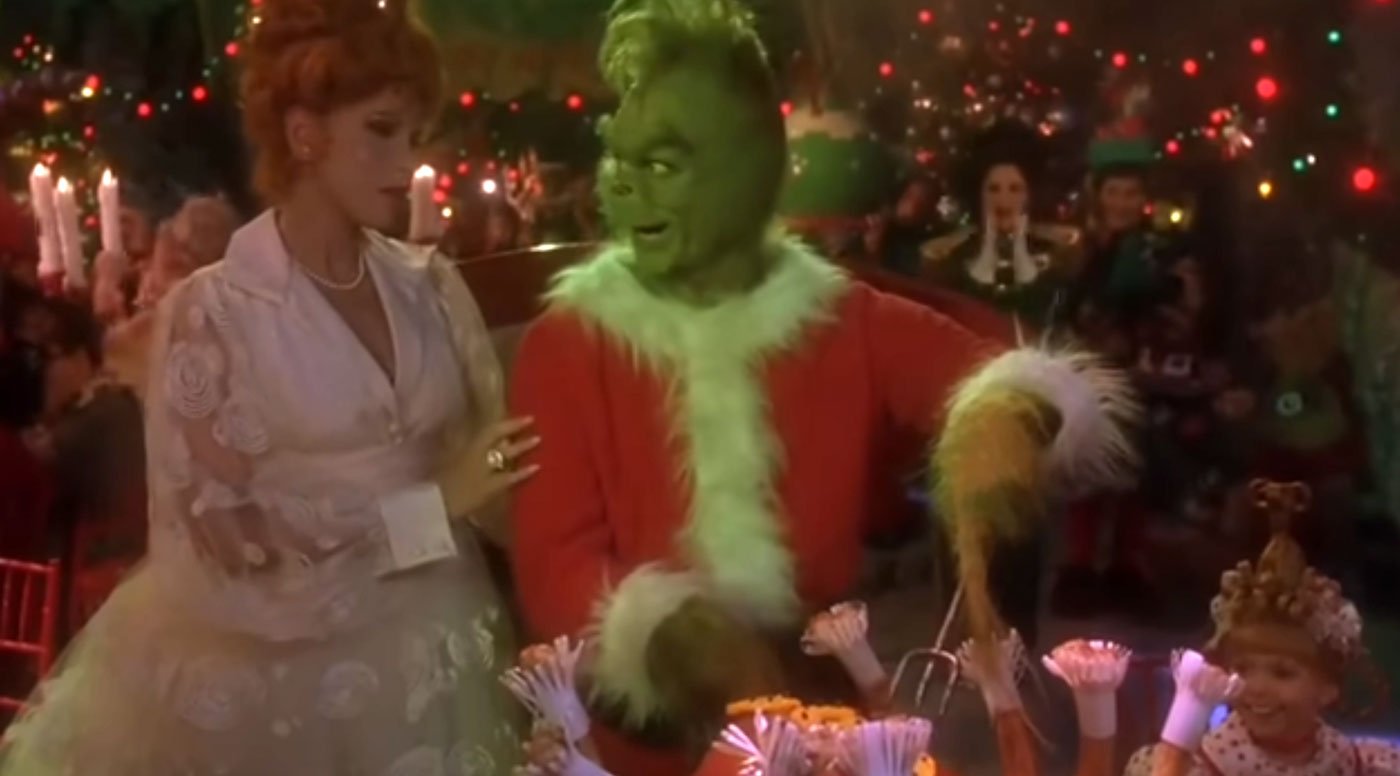The Psychology of the Grinch - Understanding His Transformation
Discover why the Grinch hated Christmas and how kindness and empathy transformed him from recluse to redeemed. A psychological look at Dr. Seuss’s classic.
Updated 03/12/2025 - Image © and ™ Universal Pictures, Imagine Entertainment, and Dr. Seuss Enterprises
Few fictional characters have captured the emotional complexity of the holidays quite like the Grinch. Dr. Seuss’s How the Grinch Stole Christmas—first published in 1957—remains one of the most enduring stories of seasonal redemption. Adapted countless times for film and television, from Chuck Jones’s animated classic to Ron Howard’s 2000 feature starring Jim Carrey and Illumination’s 2018 CGI retelling, the Grinch has become far more than a green curmudgeon. He is a psychological study in alienation, cynicism, and ultimately, transformation.
The tale’s universal appeal lies in its emotional realism. Beneath the rhymes and candy-coloured visuals is the story of a deeply wounded individual. The Grinch isn’t simply a villain who despises joy; he’s a character shaped by pain, loneliness, and a longing for connection that he can’t quite admit to himself. And that’s what makes his eventual change of heart not just touching, but profoundly human.
Origins of Bitterness, A Life on Mount Crumpit
The Grinch’s hostility toward Christmas is more than just seasonal irritability—it’s rooted in deep psychological isolation. Living high above Whoville on the cold slopes of Mount Crumpit, he exists in near-total solitude, both physically and emotionally. That separation is symbolic: he has distanced himself from the world not just by geography, but by choice.
© and ™ Universal Pictures, Imagine Entertainment, and Dr. Seuss Enterprises
Psychologically speaking, prolonged isolation can distort perception. It breeds resentment and amplifies differences. The laughter and lights of Whoville become unbearable reminders of what the Grinch lacks—belonging. In some adaptations, including the 2000 live-action film, we glimpse a formative childhood marked by ridicule and rejection. Bullied for his appearance, the young Grinch withdraws, convincing himself he doesn’t need anyone. This is classic defensive detachment: pushing the world away before it can hurt you again.
That self-protective strategy works—until the holidays arrive. Christmas, with its enforced cheer and communal spirit, becomes a mirror of his loneliness. His hatred of the holiday is, in truth, hatred of the feeling it evokes: exclusion.
Behind the Green: Personality and Psychological Traits
The Grinch’s defining traits align with several recognisable psychological patterns. He displays elements of narcissism, cynicism, and emotional repression, all of which act as barriers to vulnerability.
Narcissism manifests in his inflated sense of superiority. He mocks the Whos’ traditions as “noise, noise, noise,” dismissing their joy as shallow and foolish. This detachment serves as armor—if he can convince himself that he’s above them, he doesn’t have to acknowledge how much he craves what they have.
His cynicism is equally defensive. By reducing Christmas to mere consumerism, he avoids confronting the genuine warmth that underpins it. Cynicism is often a mask for disappointment; it’s easier to sneer at happiness than to risk hoping for it.
© and ™ Universal Pictures, Imagine Entertainment, and Dr. Seuss Enterprises
Then there’s his emotional repression. The Grinch’s self-imposed exile has frozen more than his home—it’s frozen his capacity for empathy. He watches the Whos’ festivities from afar, convinced that joy is weakness. His plan to “steal Christmas” isn’t just an act of revenge—it’s a desperate attempt to control what he doesn’t understand.
The Turning Point: Kindness and Cognitive Dissonance
Every great redemption story hinges on a moment of rupture—an event that forces the character to confront the limits of their worldview. For the Grinch, that moment arrives through the smallest of figures: Cindy Lou Who.
Her innocence and compassion introduce a concept unfamiliar to him—unconditional kindness. When she treats him not as a monster but as someone worthy of empathy, it destabilises his cynicism. Psychologists call this cognitive dissonance: the discomfort we feel when our beliefs and experiences collide. The Grinch believes he’s unlovable; Cindy Lou treats him as though he’s not. His brain can’t reconcile the two.
The second catalyst comes after he’s stolen Christmas. Expecting despair, he’s instead met with music. The Whos, undeterred by the loss of gifts and decorations, celebrate anyway. Their joy, stripped of materialism, forces him to question everything. If Christmas isn’t about things, then perhaps it’s about connection—and connection, as he’s long feared, requires vulnerability.
That realisation breaks through his defenses. In a beautifully metaphorical moment, “his heart grows three sizes.” It’s not biology—it’s emotion. He experiences empathy, perhaps for the first time since childhood.
Theories Behind the Transformation
Several psychological frameworks illuminate the Grinch’s change of heart.
Humanistic psychology, pioneered by Carl Rogers and Abraham Maslow, views personal growth as a journey toward self-actualisation. By embracing kindness and community, the Grinch transcends his defenses, becoming his most authentic self. His transformation isn’t imposed by others; it’s a rediscovery of the compassion that was always buried within him.
© and ™ Universal Pictures, Imagine Entertainment, and Dr. Seuss Enterprises
Attachment theory also plays a role. The connection he forms with Cindy Lou Who acts as a corrective emotional experience. Her trust helps repair the broken attachment patterns that once led him to isolate. Secure attachments, psychologists note, are essential for empathy and self-worth.
Finally, there’s cognitive reframing—the process of changing how one perceives events. When the Grinch sees that the Whos’ happiness persists despite his sabotage, his belief system collapses. What begins as shock becomes understanding: happiness isn’t dependent on control or possession—it’s shared.
Redemption and Connection
The final act of How the Grinch Stole Christmas offers more than festive sentimentality—it’s a profound statement about emotional healing. When the Grinch returns the stolen gifts and joins the Whos’ feast, it symbolises reintegration. He’s not simply forgiven; he’s accepted. That acceptance is the key to his transformation.
In cinematic terms, it’s a perfect resolution arc. The antagonist becomes his own saviour, not through punishment, but through empathy. His redemption doesn’t erase his flaws—it acknowledges them. The Grinch’s grin, once sneering, softens into something human.
And that’s why audiences continue to be drawn to him. The story’s magic isn’t in its fantasy—it’s in its psychology. The Grinch is all of us, in the moments we retreat from others, in the times we guard our hearts too fiercely. His story suggests that even in bitterness, there’s potential for renewal.
More than sixty years after its publication, How the Grinch Stole Christmas endures not just because it’s cheerful, but because it’s honest. It acknowledges that joy can feel threatening to those who’ve been hurt, that cynicism often hides longing, and that kindness—genuine, uncalculated kindness—has the power to change everything.
The Grinch’s transformation is one of the most enduring emotional journeys in modern storytelling. It reminds us that no one is beyond redemption, that empathy can bridge the widest gap, and that, sometimes, the smallest voice—a child’s belief, a community’s song—can awaken even the coldest of hearts.
In the end, the Grinch doesn’t just learn the meaning of Christmas. He learns the meaning of connection.





